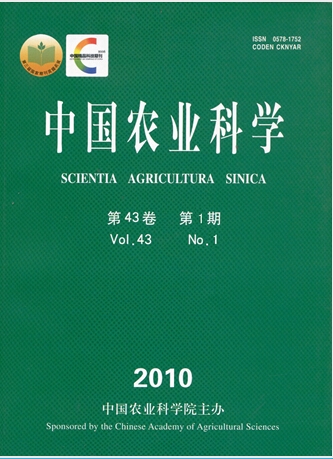【Objective】 The objective of this paper is to study the coupling effect of water and nitrogen on population physiological indices, cotton biomass and cotton yield under alternative furrow irrigation (AFI). 【Method】 The alternate furrow irrigation methods was used, the second common rotary combination design water and nitrogen application rate, and the cotton population physiological indices changes in different water and nitrogen combinations were determined in test area of field. 【Result】 The result showed that a single-factor effect of water or nitrogen on cotton physiological indices, cotton yield, cotton biomass was observed. Leaf area duration (LAD), crop growth rate (CGR), net assimilation rate (NAR), leaf area index (LAI), yield, biomass of the irrigation and nitrogen single-factor effect indicates that when nitrogen rate was at 56.2-122.8 kg?hm-2, population physiological indices, yield, biomass and nitrogen application rate were significantly and positively correlated. Nitrogen application rate at 122.8-134.2 kg?hm-2, LAD and CGR were significantly and positively correlated, and NAR, LAI, biomass, yield, and had no significant changes. When irrigation norm was at 37.52-192 mm, population physiological indices, cotton yield, cotton biomass and irrigation had a significant positive correlation. When irrigation norm was at 192-218.48 mm, LAD, CGR, LAI and irrigation were significantly correlated, NAR, and biomass, cotton yield did not change significantly. Cotton population physiological indices, cotton biomass, cotton yield of water and nitrogen coupling effect show that when irrigation norm was at 37.52-192 mm, LAD, CGR, NAR, and LAI increased significantly with the increase of irrigation norm, but the increasing trend with the increase in nitrogen application rate decreased. Irrigation in the 192-218.48 mm, under different nitrogen application rate, population physiological indices, biomass, yield no significant change. When the nitrogen rate was at 56.2-95.2 kg?hm-2, LAD, CGR, NAR, and LAI increased significantly with the increase of nitrogen application rate, but the increasing trend with the increase of nitrogen application rate tended to decrease. When nitrogen application rate was 95.2-134.2 kg?hm-2, the population physiological indices, cotton biomass, cotton yield had no significant changes. 【Conclusion】 The coupling effect of water and nitrogen on cotton physiological indicators, biomass and yield under alternative furrow irrigation, can be utilized which is to coordinate cotton growth and development, thus improving cotton yield and water and nitrogen use efficiency.









